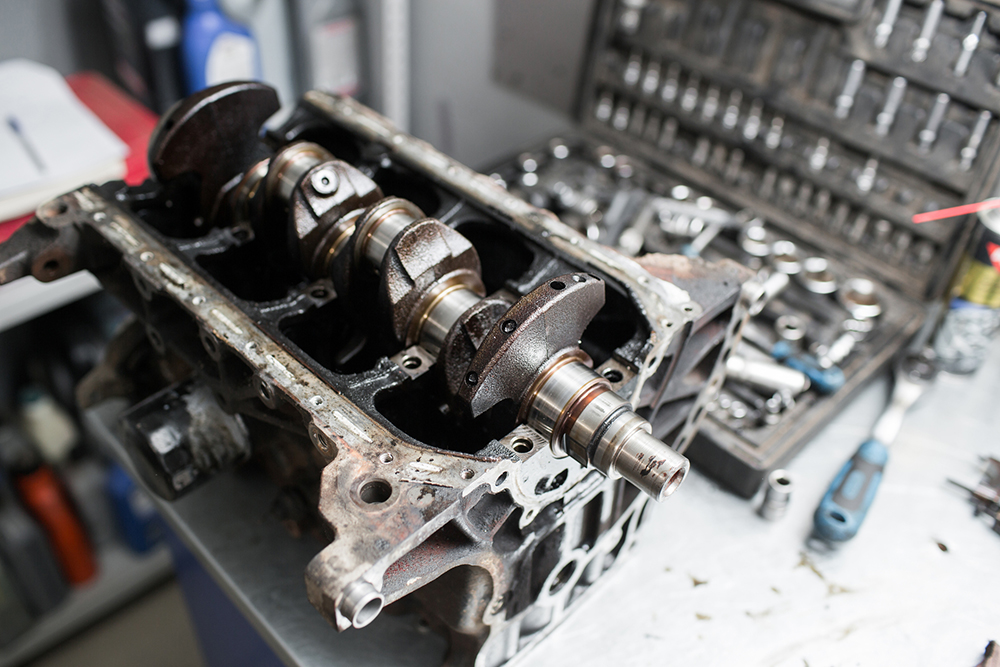WHAT CAN HAPPEN TO AN OIL FILTER WHEN THE PRESSURE RELIEF VALVE FAILS?

The oil pump maintains oil pressure to lubricate internal components. Most oil pumps are positive displacement pumps, which deliver more oil than an engine needs. To address this, there’s a pressure relief valve located at the oil pump outlet. Its purpose is to open when engine oil pressure reaches a certain value. A problem with the pressure relief valve can cause damage to the engine oil filter and to the engine itself.
How an oil pump works
Modern oil pumps are either driven off the camshaft, crankshaft, or timing belt/chain. This allows the oil pump to rotate faster and distribute more oil when engine RPMs increase. The pump turns and pulls oil from the pan through a pickup tube. It then pushes pressurized oil through the oil filter and into the engine.
There are two common types of pumps:
- Gear: A gear-type pump uses two spur gears in a housing. Oil is pulled into the housing and through the gear teeth, where it is pressurized. The oil then exits the pump outlet and is sent to the engine.
- Rotor: A rotor-type pump uses a lobe-shaped gear and rotor inside a housing. Oil enters the housing and is pulled into space between the lobes. The lobes mesh, pressurizing oil to be sent throughout the engine.
How an oil pump pressure relief valve works
Under normal pressure conditions, the oil pressure relief valve is forced down against a spring. As a result, oil goes directly through the pump to the engine. As oil pressure created in the system increases, the valve’s piston is forced against the spring causing it to open. This allows oil to flow back into the crankcase preventing excessive oil pressure. The spring tension of the relief valve determines the maximum oil pressure.
Damage caused by a faulty pressure relief valve
Oil pump pressure relief valves can fail in either the open or closed position. This can cause damage to the engine oil filter and to the engine itself.
• A pressure relief valve that is stuck open can allow too much oil to bleed off. This results in a lack of oil pressure and catastrophic engine damage.
• A valve stuck closed will result in excessive oil pressure. This can blow out the oil galley plugs in the engine block. When this happens, the engine loses a large amount of oil and pressure drops. Internal components are starved of oil, causing them to quickly overheat and seize.
• Often when the pressure relief valve sticks closed, severe damage to the oil filter is the result. The extreme pressure causes the gasket that seals the oil filter to the engine block to fail which results in a severe oil leak and loss of lubrication to the engine.
Damage caused by a failed pressure relief valve typically results in an engine that will have to be rebuilt or replaced. Obviously, this is an expensive repair.
How to prevent relief valve failure
There is no sure way to prevent relief valve failure. In some cases, the valve just wears out over time. However, regular oil changes help prevent sludge and varnish build up, both of which can cause the valve to stick. Changing your vehicle’s engine oil according to the maintenance schedule is the best way to prevent relief valve problems.

